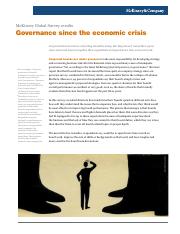Content

The first step in identifying such problems is to carefully monitor sales returns and allowances in a separate, contra‐revenue account. Assets, or what is owned by the business, are recorded in a company’s general ledger and appear on the balance sheet. Assets appear with a positive balance because they are recorded as a debit to the account. A negative balance, or credit entry, in an asset account, usually indicates a mistake or is accompanied by an explanation.
At the same time, a $1,000 expense is created and included in the company’s COGS. A company’s inventory reserve helps it present an accurate inventory position. Statement of retained earnings The statement of retained earnings, as you recall, is a financial statement that summarizes the transactions affecting the Retained Earnings account balance. In Exhibit 42, the statement of retained earnings shows an increase in equity resulting from net income and a decrease in equity resulting from dividends. An ending inventory balance is reported as a current asset on the balance sheet at the end of an accounting period. A write-off journal entry removes an asset not in use and its related contra account from the balance sheet.
Division of Financial Services
The allowance method of accounting allows a company to estimate what amount is reasonable to book into the contra account. For example, if a piece of heavy machinery is purchased for $10,000, that $10,000 figure is maintained on the general ledger even as the asset’s depreciation is recorded separately. The amount is reported on the balance sheet in the asset section immediately below accounts receivable. Key examples of contra accounts include accumulated deprecation and allowance for doubtful accounts. Inventory write-down is recorded as an expense in the books of accounts and this will lead to a decrease in the net profit of the company in a given period. The management at first need to understand and estimate the value of the inventory write-down as it will determine the accounting treatment to be followed.
Is cogs a contra inventory account?
It is false that the cost of goods sold is a contra-revenue account. The cost of goods sold is classified as an expense account rather than a contra-revenue account. A contra revenue account includes sales discounts, allowances, and returns that are tracked and offset the gross revenues collected.
The key example of a contra equity account is Treasury stock, which represents the amount paid to buyback stock. Note that accountants use contra accounts rather than reduce the value of the original account directly to keep financial accounting records clean. If Music World returns merchandise worth $100, Music Suppliers, Inc., prepares a contra inventory account credit memorandum to account for the return. This credit memorandum becomes the source document for a journal entry that increases the sales returns and allowances account and decreases accounts receivable. Auditors are expected to ask a company to provide an explanation anytime the assumptions used to create an inventory reserve change.
What is Contra Account?
In this article, we look closely at contra assets and the different types of contra accounts you may see on financial statements. This predicted drop in inventory value is credited to a separate contra asset account (i.e., inventory reserve or allowance for obsolete inventory) which offsets the inventory line item in the balance sheet. Revenues do not appear on the balance sheet but are listed as part of the income statement. Some accounting professionals use contra revenue accounts to adjust gross receipts and calculate net revenue.
Which accounts are contra accounts?
A contra account is a general ledger account with a balance that is opposite of the normal balance for that account classification. The use of a contra account allows a company to report the original amount and also report a reduction so that the net amount will also be reported.
For this reason, contra accounts are primarily seen as having negative balances because they are used to reduce the balance of another account. This type of account could be called the allowance for doubtful accounts or bad debt reserve. The balance in the allowance for doubtful accounts represents the dollar amount of the current accounts receivable balance that is expected to be uncollectible.
What is a contra asset?
The credit balance in the contra inventory account will be combined with the debit balance in the inventory account when a balance sheet is prepared. In accrual-basis accounting, recording the allowance for doubtful accounts at the same time as the sale improves the accuracy of financial reports. The projected bad debt expense is properly matched against the related sale, thereby providing a more accurate view of revenue and expenses for a specific period of time.






